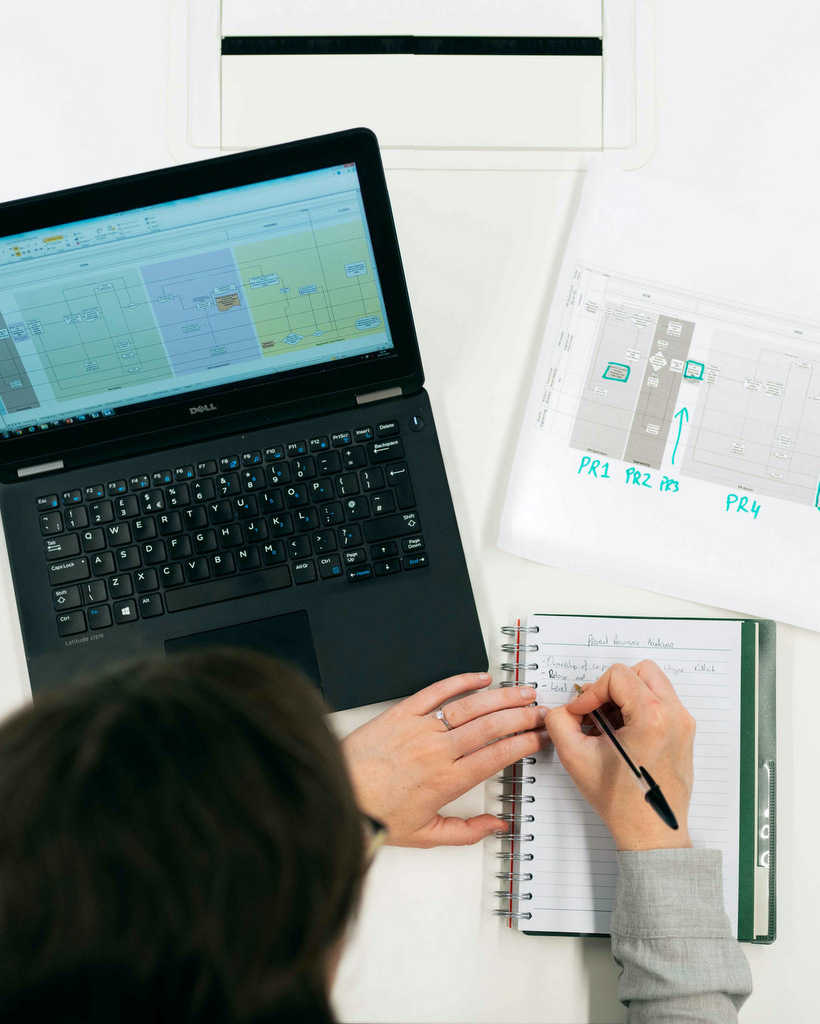10 Essential Components of Research Design And Solid Methodology
How to Craft a Research Study with a Robust Methodology: A Guide
Embarking on a research journey is a fascinating endeavour that requires a solid roadmap to ensure meaningful and accurate results. Central to this roadmap is the intricate interplay between research design and research methodology. These terms might seem interchangeable, but they encompass distinct aspects of the research process.
Research design encompasses the blueprint that guides the overall structure and organisation of your study, while research methodology involves the techniques, procedures, and tools you use to collect and analyse data. In this guide, we will delve into the essential components of creating a research study with a robust methodology that stands up to scrutiny and advances knowledge in your chosen field.
The 10 Essential Components of Creating a Research Study
#1 Defining Research Design and Research Methodology
- Research Design: At its core, research design refers to the plan that outlines how you will conduct your study, from the formulation of research questions or hypotheses to data collection methods and analysis techniques. It’s the architecture that shapes the overall trajectory of your research.
- Research Methodology: Research methodology, on the other hand, comprises the techniques and tools you employ to gather and interpret data. It involves decisions about sampling, data collection instruments, data analysis methods, and even ethical considerations. Methodology breathes life into the design, enabling you to address your research questions effectively.
Research Design serves as the strategic blueprint that outlines the systematic approach you intend to take in your study. It’s not merely a series of steps, but a comprehensive plan that encompasses every facet of your research, from the fundamental research questions or hypotheses you’ll explore, down to the precise data collection methods and analytical techniques that will be employed. Think of research design as the architect’s rendering of the entire research process, guiding your journey with a clear roadmap.
In contrast, Research Methodology is the toolbox that equips you with the instruments to carry out the plan delineated by your research design. These methodologies involve a vast array of decisions – from selecting the most appropriate sampling techniques to choosing data collection instruments that perfectly align with the nature of your research questions. Furthermore, it extends to the methods you will employ to analyse the collected data and, importantly, how ethical considerations will be woven into every step. Essentially, research methodology is the engine that drives your research design, infusing it with life and enabling you to extract meaningful insights from the data.
#2 The Crucial Relationship Between Research Questions and Design
The research design hinges on well-defined research questions. Clarity in your research questions helps you choose the appropriate design to address them, whether exploratory, descriptive, causal-comparative, or experimental.
Imagine research design as a tailored suit and research questions as its measurements. A well-fitted suit starts with accurate measurements, just as a well-crafted research design begins with well-structured research questions. The clarity and precision of your research questions directly influence the design you select. A research question that aims to understand patterns might lead you to a descriptive design, while a question exploring causal relationships could guide you toward an experimental design. Thus, the foundational connection between research questions and design choices cannot be overstated.

#3 Types of Research Designs
- Descriptive Designs: Ideal for capturing the “what” of a phenomenon, descriptive designs involve observing and describing behaviours, attributes, or characteristics. They are often preliminary and offer insights for more in-depth studies.
- Experimental Designs: These designs allow researchers to establish cause-and-effect relationships by manipulating variables. They involve control groups, experimental groups, and random assignment.
- Correlational Designs: These designs examine the relationships between variables, helping researchers understand how changes in one variable might relate to changes in another.
- Longitudinal Designs: Suitable for studying changes over time, longitudinal designs involve observing the same participants at multiple points, revealing developmental trends.
Descriptive Designs: Descriptive research acts as a reconnaissance mission, capturing the essence of a phenomenon. These designs excel at answering “what” questions, laying the groundwork for further in-depth studies. For example, a descriptive study might explore the characteristics of a newly discovered species, providing the basic data required for more extensive research.
Experimental Designs: Experimental designs are akin to scientific laboratories, allowing researchers to manipulate variables to establish cause-and-effect relationships. By employing control and experimental groups, researchers can isolate the influence of specific factors, providing robust evidence for causal claims. These designs are particularly useful in fields like medicine, where testing the efficacy of new treatments is paramount.
Correlational Designs: These designs delve into relationships between variables, revealing how changes in one variable correspond to changes in another. For instance, a correlational study might uncover a strong connection between sleep patterns and academic performance, shedding light on potential influences.
Longitudinal Designs: Longitudinal designs are like time-lapse photography, capturing changes in individuals or groups over an extended period. By observing the same participants at various points, researchers gain insights into developmental trends, making them essential for studying human growth, societal changes, or educational trajectories.
#4 Sampling Techniques and Considerations
Using the right sample is pivotal for research validity. Techniques like random sampling, stratified sampling, and convenience sampling impact the generalisability of findings. Considerations like sample size and representativeness influence the strength of your conclusions.
Selecting the right sample is like choosing the ingredients for a recipe – it determines the flavour of your study. Random sampling is like drawing ingredients blindly, ensuring a representative mix. Stratified sampling is akin to selecting specific categories of ingredients to ensure a balanced dish, while convenience sampling is comparable to using the ingredients at hand.
The size of your sample impacts the quality of your dish, with larger samples offering more robust conclusions. Just as a well-cooked dish pleases the palate, a well-selected sample pleases the academic appetite.

#5 Data Collection Instruments
Questionnaires, interviews, surveys, observations, and existing records are common data collection tools. The choice depends on your research questions, design, and available resources. Validity and reliability are essential in ensuring that your instruments measure what they intend to and yield consistent results.
Picture data collection instruments as a diverse ensemble of tools in a researcher’s toolkit. The choice of instrument depends on the research design, questions, and resources at hand. Questionnaires act as surveys, gathering structured information efficiently. Interviews are like in-depth conversations, unearthing nuanced insights. Observations become windows into behaviour, revealing hidden patterns. Existing records act as historical archives, offering glimpses into the past. Regardless of the instrument, their validity and reliability are akin to a chef’s precision – crucial for a satisfying outcome.
#6 Data Analysis Methods
Quantitative studies often involve statistical analysis techniques like regression, ANOVA, and chi-square tests. Qualitative studies use methods like thematic analysis, content analysis, and grounded theory to extract meaningful patterns from textual or visual data.
In the research kitchen, data analysis methods are the secret recipes that transform raw ingredients into delectable dishes. Quantitative studies employ statistical techniques like regression, ANOVA, and chi-square tests, transforming numbers into meaningful insights.
Qualitative studies, however, are like the art of pairing flavours, using thematic analysis, content analysis, and grounded theory to extract the essence from textual or visual data. Just as a culinary masterpiece marries ingredients in perfect harmony, data analysis methods bring coherence to the research findings.

#7 Ethical Considerations
Ethical research demands safeguarding participants’ rights, obtaining informed consent, and ensuring confidentiality. Adhering to ethical guidelines builds trust and credibility in your study.
Ethics in research is like the dining etiquette at a grand banquet – it ensures that participants are treated with respect and integrity. Safeguarding their rights is the equivalent of offering them a seat at the table. Obtaining informed consent is akin to explaining the menu before serving a dish, ensuring participants are aware of what’s involved. Confidentiality acts as the vault that protects their privacy, building trust and integrity in the research process. Adhering to ethical guidelines is as crucial as adhering to table manners – it cultivates an environment of professionalism and mutual respect.
#8 Validity and Reliability
Validity assesses whether your study measures what it intends to, while reliability gauges the consistency of your measurements. Triangulation, member checks, and inter-rater reliability enhance the robustness of your study.
In research, validity and reliability are like the sturdy foundation of a well-built structure. Validity ensures that your study measures what it intends to, just as a sturdy pillar supports the weight it’s designed for. Reliability is the consistency that underpins your measurements – like the uniformity of bricks in a wall. Just as an architect cross-checks plans, triangulation and member checks enhance the robustness of your research. Inter-rater reliability acts as the seal of approval, ensuring that multiple perspectives align harmoniously.
#9 Pilot Studies
Conducting a pilot study helps identify potential issues with your research design, methodology, or instruments before the main study. It’s a crucial step in refining your approach.
A pilot study is akin to a dress rehearsal before a grand performance. Imagine your research as a stage production – a pilot study is the practice run that unveils potential glitches, ensuring that the main event goes off without a hitch. Like trying on costumes and testing lighting cues, a pilot study uncovers issues with design, methodology, and instruments before the curtains rise. This prelude to the main research endeavour can be likened to fine-tuning an orchestra before the concert – a crucial step in refining your approach and ensuring the spotlight shines on your findings.

Key Takeaways
- Research design is the blueprint that guides your study, while research methodology involves the techniques for data collection and analysis.
- Research design is closely linked to well-defined research questions, shaping the direction of the study.
- Types of research designs include descriptive, experimental, correlational, and longitudinal.
- Sampling techniques impact the representativeness of your findings, and data collection instruments should be valid and reliable.
- Quantitative studies use statistical analysis, while qualitative studies employ techniques like thematic analysis.
- Ethical considerations are paramount, and maintaining validity and reliability enhances study credibility.
- Pilot studies help identify and rectify issues before the main study.
- Research is iterative and involves refining your approach based on insights.
#10 Iterative Nature of Research
Research is seldom linear; it often involves refining, revisiting, and adapting your approach based on emerging insights and challenges.
Picture research as a sculptor moulding clay – it’s an iterative process that requires shaping and reshaping until the desired form emerges. Just as an artist revisits their canvas, research often demands revisiting and refining your approach. As you uncover insights, challenges, and unexpected discoveries, adapting your strategy becomes essential. Embracing this iterative nature is akin to sailing with the wind – it allows you to navigate uncharted waters and reach new horizons of understanding.
Keep in mind that research design and methodology work in harmony, guiding your journey while equipping you with the tools to explore uncharted territories. Clarity in your research questions sets the tone, with design choices echoing the path you chart. From choosing data collection tools to adhering to ethical considerations, every step contributes to the symphony of a meticulously crafted research study.
Contributing To Advancements in Your Field
A robust research study hinges on the symbiotic relationship between research design and research methodology. The design serves as the guiding framework, while the methodology equips you with the tools to explore your research questions rigorously. The journey from formulating clear research questions to selecting appropriate designs, sampling methods, data collection instruments, and analysis techniques demands meticulous planning, ethical considerations, and a commitment to validity and reliability.
Embrace the iterative nature of research, welcoming the opportunity to refine and adapt your approach as you uncover new dimensions of understanding within your chosen field. Remember, a well-crafted research study not only contributes to academia but also shapes the larger discourse in your area of interest.
Useful Resources
- Research Methods Knowledge Base – An extensive repository of information on research methods and design.
- Way With Words – Professional academic research transcription services that enhance the accuracy and clarity of your research interviews and recordings.
Engagement Questions
- How do you envision the relationship between research design and research methodology in optimising the quality of your study?
- Can you identify a real-world scenario where choosing the right research design significantly impacted the study’s outcomes?
- In what ways can a well-thought-out pilot study contribute to the success of your main research endeavour?
